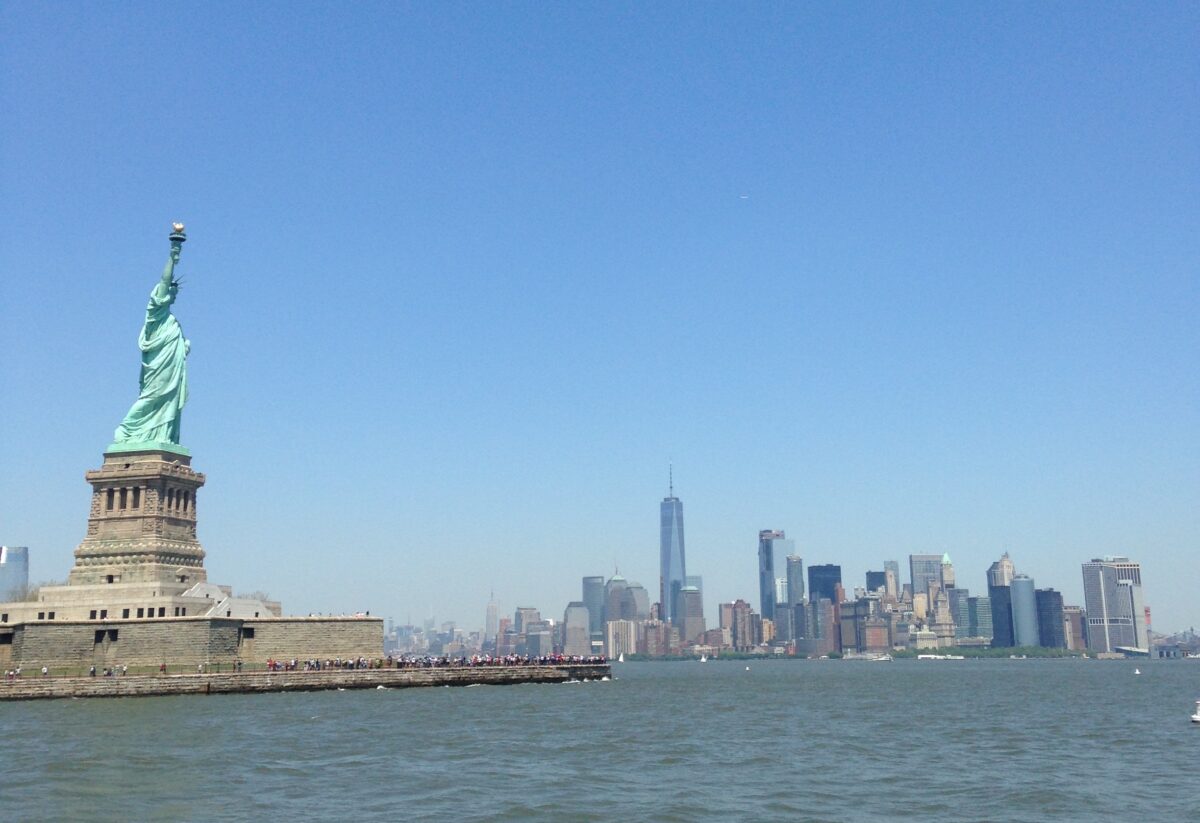National Historic Landmarks
Since the 1930’s the United States government has recognized the historical significance of over 2,500 places by designating them to be National Historic Landmarks (NHL). Places that immediately come to mind are the Statue of Liberty, the Gateway Arch, Golden Gate Bridge and The White House.

But this designation can include a much wider variety of places. For example, the Old Faithful Inn at Yellowstone National Park in Wyoming, Grant-Kohrs Ranch in Montana, the Lolo Trail in Idaho, and the North Manitou Island Lifesaving Station at Sleeping Bear Dunes in Michigan are all National Historic Landmarks. So are the USS Arizona and USS Utah at Pearl Harbor in Hawaii. In fact, over 100 ships and shipwrecks have been designated National Historic Landmarks.
This variety is because, by definition, National Historic Landmarks may be buildings, districts, objects, sites or structures. When there are many, the site may be designated a National Historic Landmark District. For example, the famous Skyline Drive in the Shenandoah National Park in Virginia is a National Historic District, as is the Beaufort Historic District in South Carolina’s Reconstruction Era National Historical Park.
Of the 2,500+ National Historic Landmarks, some 200 of them are encompassed within a National Park Unit. For example, there are eight National Historic Landmarks within the Grand Canyon, including the famous El Tovar Hotel, Grand Canyon Railroad Depot, Grand Canyon Lodge, and the relatively unknown (and hard to reach) 1956 Grand Canyon TWA-United Airlines Aviation Accident Site.
Little Rock Central High School National Historic Landmark (and National Historic Site)

Little Rock Central High School in Arkansas is a very good example of the historical significance of a National Historic Landmark. This location has been a school for over 150 years. The first class graduated from a school at this location in 1873, and in 1905 the city funded the Little Rock High School. It is still operating today, with just over 2,500 students enrolled in grades 9 through 12 in 2022.

But it is not the longevity of the school that is important, what is of most significance is the role that Little Rock High Central High School played in school desegregation. In 1957, three years after the United States Supreme Court rule that segregation by race in public schools was unconstitutional, nine black students were refused entrance to the school. This was the first test of the 1954 Brown vs. Board of Education decision by the US Supreme Court. Although blatantly illegal, continued segregation of schools had the full support of the Arkansas Governor.
On September 23, 1957 these nine students came to school. You can see photos of these young children, bravely walking through an angry mob of protestors, surrounded by police. As the mob violence threatened to escalate, the students were not able to stay at school that day. But the next day, at the order of President Dwight D. Eisenhower, they were escorted to school by the US Army. And to prevent the Governor from further undermining the desegregation law, the President federalized the entire Arkansas National Guard, effectively removing them from the Governor’s control. Another infantry division was sent to the school to assume control, and they patrolled inside and outside the school for the remainder of the school year.
Little Rock Central High School was the flashpoint in the struggle for civil rights and served as a catalyst for change, earning its designation as both a National Historic Landmark and National Historic Site.

Are you trying to visit all the National Parks or National Park Units?
If your goal is to visit them, one or all, we’d love to help you strategize. Give us a call at (480) 609-3978 or drop us a note here. We always enjoy talking with people who share our passion for visiting these gems of the National Park Service.
#FindYourPark
#SeeAmericaFirst

